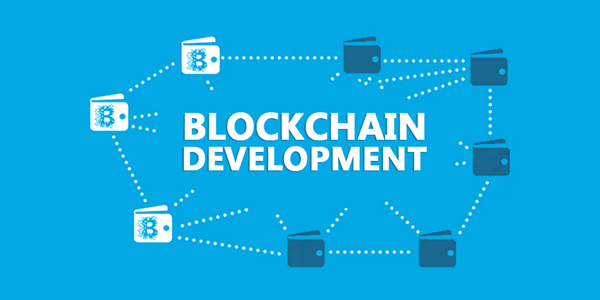Traditional customer segmentation methods, which often rely on basic demographic data such as age, gender, or location, have major limitations. These methods can result in overly broad segments that fail to capture the nuances of customer behavior and preferences. As a result, marketing or sales strategies may lack the precision needed to effectively target high-value prospects.
Data-driven customer segmentation addresses these challenges by relying on detailed and dynamic customer data such as transactional history, web behavior, and social media interactions. This advanced approach allows businesses to create more accurate and actionable customer segments, leading to more personalized marketing efforts and improved customer acquisition rates. Read on to discover more about the advantages and value of data-driven strategies to improve sales performance and target high-value prospects through effective segmentation.
Approaches for Data-Driven Customer Segmentation
As businesses are aiming to stay ahead by enhancing their sales efforts, they are turning to advanced ways to refine their customer segmentation strategies. Let’s understand some of these in detail.
1. Psychographic Segmentation
Psychographic segmentation extends beyond traditional demographic or geographic approaches by considering customers’ personalities, values, lifestyles, interests, and attitudes. This method seeks to understand the intrinsic motivations and psychological factors driving customer behavior.
For instance, a travel company might segment customers based on their travel motivations, such as adventure seekers, cultural explorers, or luxury travelers. This type of segmentation allows the company to tailor its marketing messages, product offerings, and experiences to align with the specific mindsets and values of each segment.
2. Behavioral Segmentation
Behavioral segmentation takes into account a wide range of customer actions and patterns, such as website clickstreams and browsing behavior, social media engagement (shares, comments, likes), and shopping cart activities (additions, abandonments). It also includes purchase histories and transaction data, product usage and feature adoption, as well as customer support interactions and inquiries. By tracking and analyzing these behavioral data points, you can uncover meaningful segments that reflect customers’ actual preferences, interests, and levels of engagement with your brand.
For example, you could identify a segment of “high-value customers” based on their frequent purchases and consistent product usage. Another segment might be “social influencers,” who actively share your content and drive referrals on social media. You may also uncover segments like “browsers” who exhibit high website traffic but low conversion rates, or “bargain hunters” who primarily respond to promotions and discounts.
With these insights into customer behaviors, you can then tailor your marketing strategies, product offerings, and overall customer experience to better cater to the unique needs and tendencies of each segment.
3. Need-Based Segmentation
Need-based segmentation involves identifying and understanding the specific needs, pain points, or desired outcomes that customers seek to fulfill through a product or service.
For instance, a software company might segment its customers based on their specific business needs, such as streamlining operations, enhancing data analysis capabilities, or improving customer relationship management. This need-based segmentation enables the company to develop targeted solutions and value propositions that directly address the unique needs of each segment. Compared to basic segmentation based on company size or industry, need-based segmentation provides a deeper understanding of the customer’s core objectives. This facilitates the development of more relevant and valuable solutions that resonate with each segment’s needs.
Use Cases of Data-Driven Customer Segmentation
1. Identifying High-Value Prospects
Advanced segmentation techniques enable sales teams to identify high-value prospects more accurately by analyzing various aspects of customer data. By leveraging data such as purchase history, frequency of interactions, and customer lifetime value (CLV), sales teams can prioritize leads based on their potential value to the business.
For example, through RFM (Recency, Frequency, Monetary) analysis, sales teams can identify customers who have made recent high-value purchases or who frequently engage with the brand. This allows them to focus their efforts on prospects who are more likely to convert into valuable customers, thereby maximizing the return on investment (ROI) of their sales efforts.

2. Personalizing Marketing Efforts
Data-driven customer segmentation enables sales and marketing teams to personalize marketing efforts more effectively by tailoring messages and offers to specific customer segments. By analyzing data-driven customer segments, sales teams can create targeted marketing campaigns that resonate with each segment’s unique characteristics.
For instance, by segmenting customers based on their purchasing habits or product preferences, sales teams can deliver personalized product recommendations or promotional offers that are more likely to capture the interest of each segment. This level of personalization not only enhances the customer experience but also increases the likelihood of driving conversions and repeat purchases.
3. Improving Customer Retention
By segmenting customers based on factors such as engagement level, purchase frequency, and satisfaction scores, sales teams can precisely identify at-risk customers.
For instance, a company may notice a decline in the frequency of purchases or a decrease in engagement with marketing communications from certain segments. Once at-risk customers are identified, sales teams can execute retention strategies tailored to address the specific needs and concerns of that particular segment. These strategies may include crafting personalized offers or discounts for re-engaging customers, implementing loyalty programs to encourage customers to consistently choose your business, or providing proactive customer support to resolve any issues swiftly.
Importance of High-Quality Data in Customer Segmentation
Clean, accurate, and comprehensive data are the foundations of successful strategies when it comes to customer segmentation and targeted marketing.
Poor quality customer data can significantly undermine the effectiveness of customer segmentation efforts. Incomplete, outdated, or inaccurate data can lead to flawed analysis and misguided segmentation, resulting in businesses targeting the wrong audience or failing to cater to their customers’ actual needs and preferences. This, in turn, can lead to wasted marketing resources, missed opportunities, and a negative impact on customer satisfaction and loyalty.

To overcome these challenges and ensure accurate customer segmentation, businesses must prioritize data enrichment. Data enrichment involves supplementing existing customer data with additional insights and attributes from third-party sources, advanced analytics, and real-time data feeds. This process helps businesses access up-to-date, comprehensive, and high-quality data, enabling them to perform accurate analysis and create well-defined customer segments.
Real-World Example: The Power of Enriched Data in CRM Systems for Customer Segmentation
For many businesses, CRM systems like Salesforce are the central repositories for customer data. However, the data within these systems is often limited to basic transactional and demographic information. To truly maximize customer segmentation, it becomes crucial to enrich this data with additional insights and attributes.
Salesforce data enrichment involves integrating third-party data sources and leveraging advanced analytics to augment the existing customer data with valuable behavioral, psychographic, and contextual insights. Professional service providers specializing in Salesforce data enrichment can help businesses access a wealth of up-to-date and comprehensive customer information, enabling them to gain a deeper understanding of their target audience.

Recently, a renowned US-based water technology company was struggling with outdated and incomplete data in their Salesforce CRM, which contained over 500,000 customer and prospect records. This led to ineffective marketing efforts and stagnant sales. To address this challenge, the company sought professional assistance in data enrichment and customer profiling services.
Experts helped cleanse and append missing information, creating detailed account profiles for companies and contacts within the CRM. Additionally, they researched and built a custom list of high-value prospects. By enriching their Salesforce data and developing robust customer and prospect profiles, the company gained a deep understanding of their target audience, enabling precise customer segmentation. This empowered them to tailor marketing strategies and messaging to resonate with each customer segment’s unique needs and preferences.
The results were remarkable:
- Their email delivery rate increased by 39%
- The click-through rate improved by 25% in just 3 months
- They experience an overall sales boost of 52%
Such is the transformative impact of data enrichment in enabling effective customer segmentation, personalized marketing, and substantial revenue growth.
To Conclude
Segmenting customers based on data is a powerful strategy for targeting valuable prospects and driving growth. Through psychographic, behavioral, and need-based segmentation, companies can gain valuable insights into their customers’ behaviors, preferences, and motivations. However, the true value of segmenting customers based on data lies in the quality and depth of the data itself. High-quality, enriched data is the foundation for accurate analysis and well-defined customer segments. This ensures businesses can deliver experiences that truly match their target audiences’ needs.
Author Bio:
 Brown Walsh is a content analyst, currently associated with SunTec India- a leading multi-process IT outsourcing company. Over a ten-year-long career, Walsh has contributed to the success of startups, SMEs, and enterprises by creating informative and rich content around data-specific topics, like data annotation, data processing, photo editing tips and data mining services. Walsh also likes keeping up with the latest advancements and market trends and sharing the same with his readers.
Brown Walsh is a content analyst, currently associated with SunTec India- a leading multi-process IT outsourcing company. Over a ten-year-long career, Walsh has contributed to the success of startups, SMEs, and enterprises by creating informative and rich content around data-specific topics, like data annotation, data processing, photo editing tips and data mining services. Walsh also likes keeping up with the latest advancements and market trends and sharing the same with his readers.
















